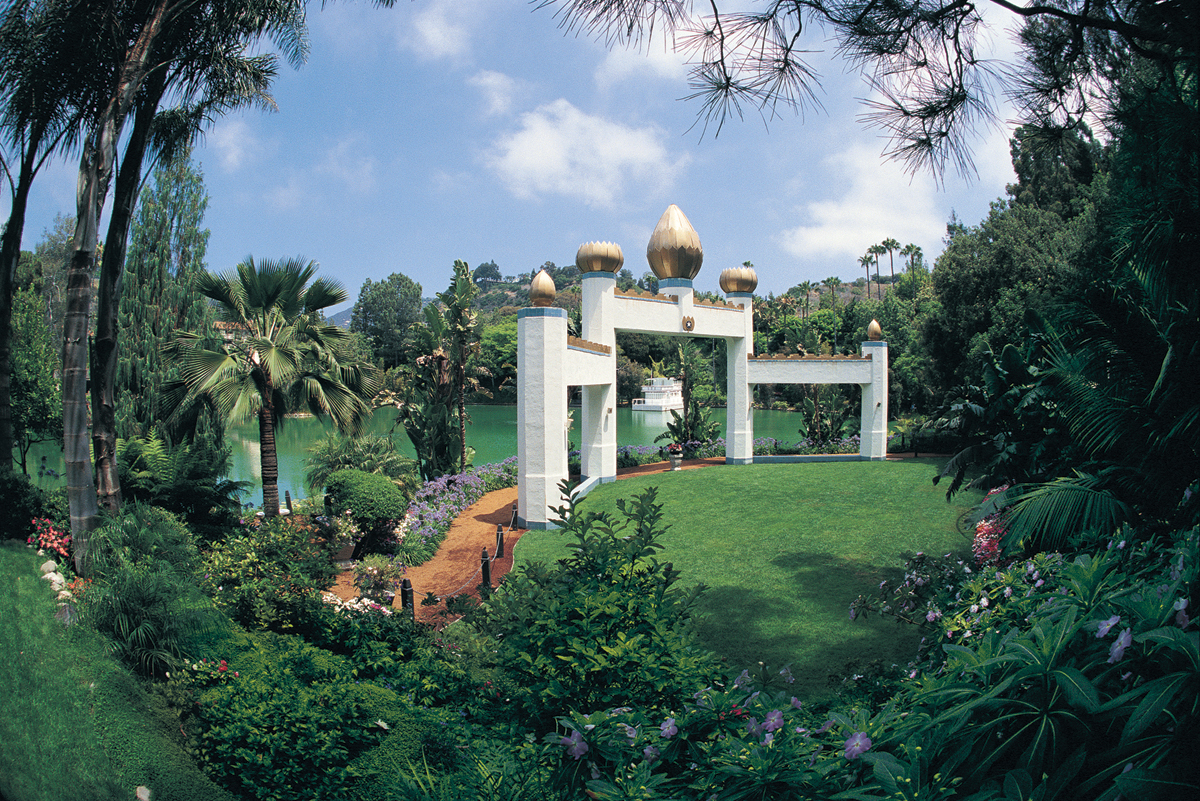Father of Yoga in the West: 125th Birth Anniversary
The Self-Realization Fellowship Lake Shrine welcomes tens of thousands of visitors each year who come to experience its tranquility and scenic beauty. (Courtesy of Self-Realization Fellowship, Los Angeles, Calif.)
Jan. 5, 2018 marks the 125th birth anniversary of one of the pioneering fathers of Yoga in the West, Paramahansa Yogananda, author of the modern spiritual classic Autobiography of a Yogi, and subject of the highly acclaimed documentary AWAKE: The Life of Yogananda (2014).
Widely recognized as one of the preeminent spiritual figures of our time, Sri Yogananda made an indelible impression on the spiritual landscape of the United States and the world, contributing to a far greater awareness and appreciation of India’s Vedic philosophy through his public lectures, writings and the nonprofit spiritual organization he founded, Self-Realization Fellowship/Yogoda Satsanga Society of India (SRF/YSS), which together includes 800 temples, meditation centers, and retreats around the world.
At the heart of Sri Yogananda’s teachings is the sacred science of Kriya Yoga, a form of Raja Yoga, which serves to quiet both body and mind, making it possible to withdraw one’s energy and attention from the usual turbulence of thoughts, emotions, and sensory perceptions. In the clarity of that inner stillness, one comes to experience a deepening interior peace and attunement with one’s true self.
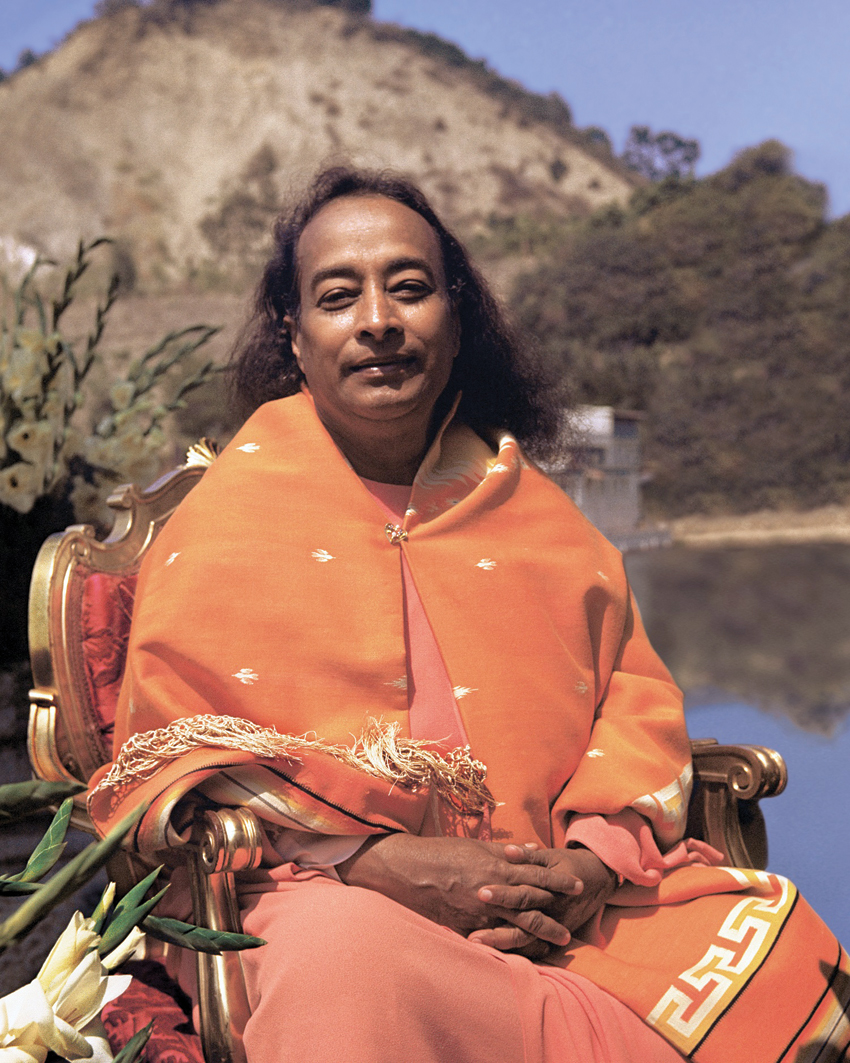
Sri Yogananda’s best-selling spiritual classic, Autobiography of a Yogi, which has introduced millions of readers to the philosophy and practice of yoga meditation, and has been translated into nearly 50 languages, remains one of the most important, and most readable, works on yoga and Eastern spiritual thought. His highly acclaimed interpretations of the Bhagavad Gita (God Talks with Arjuna), the four Gospels (The Second Coming of Christ: The Resurrection of the Christ Within You), and the Rubaiyat of Omar Khayyam (Wine of the Mystic: A Spiritual Interpretation), provide groundbreaking insight into the underlying unity of the religious beliefs of East and West.
Paramahansa Yogananda first arrived in America from India in 1920, as a delegate to an International Congress of Religious Liberals convening in Boston, Mass. That same year he founded Self-Realization Fellowship (SRF) to disseminate his teachings on India’s ancient philosophy of Yoga and the science of meditation.
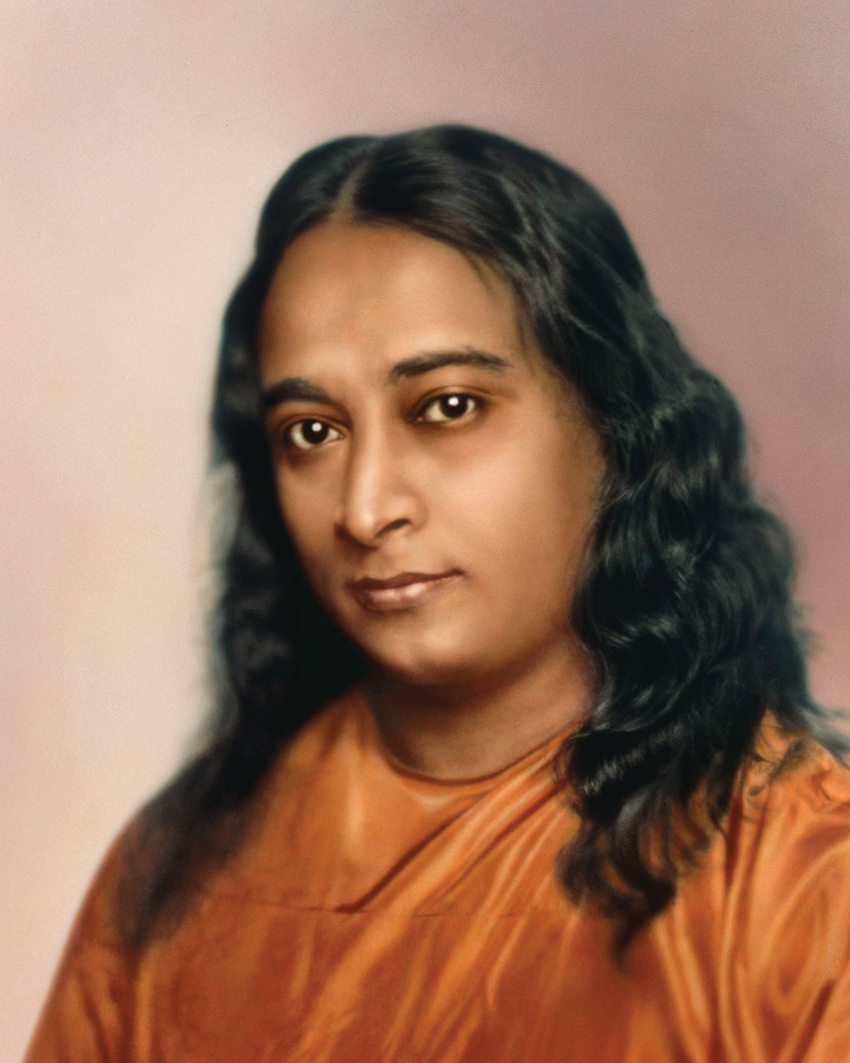
In 1925, Sri Yogananda took up residence in Los Angeles where he established an international headquarters for his organization. Over the next decade he traveled and lectured extensively, speaking to capacity audiences in major cities throughout North America and Europe. To the tens of thousands of Westerners who attended his lectures, his discourses on the unity of “the original teachings of Jesus Christ and the original Yoga taught by Bhagavan Krishna” were a revelation. Growing public acclaim prompted President Calvin Coolidge to invite Sri Yogananda for a personal meeting at the White House in January 1927, making him the first Swami to meet with a U.S. President.
Many prominent figures in science, business, and the arts became his students, including horticulturist Luther Burbank, operatic soprano Amelita Galli-Curci, George Eastman (inventor of the Kodak camera), poet Edwin Markham, and symphony conductor Leopold Stokowski. Later, Beatle George Harrison, folk singer Judy Collins and pop superstar Madonna each publicly acknowledged Sri Yogananda’s influence on their lives. Late Apple founder Steve Jobs brought attention to Autobiography of a Yogi posthumously in 2011 when he arranged for copies of the book to be given to attendees at his memorial service.
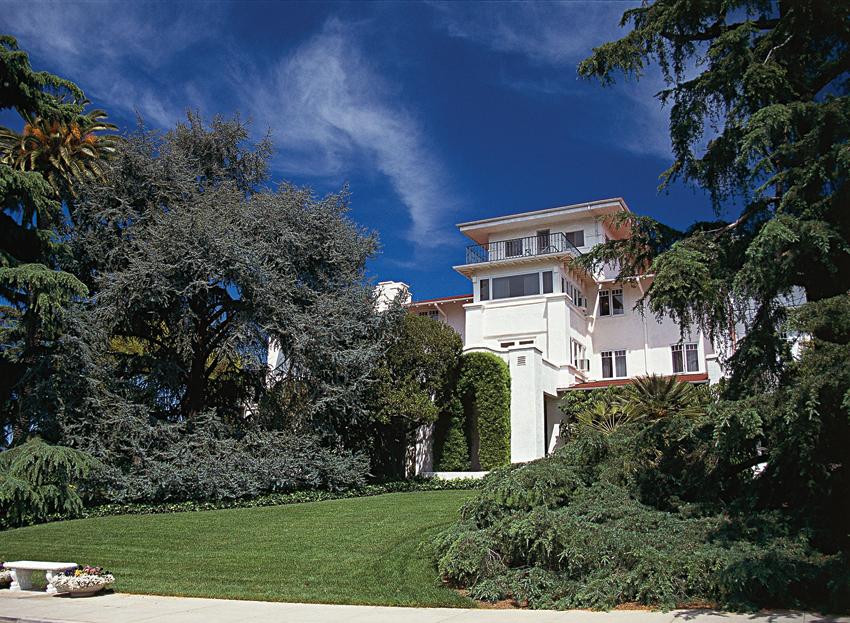
Paramahansa Yogananda was born Mukunda Lal Ghosh on January 5, 1893, in Gorakhpur, India, into a prosperous and devout Bengali family. From his earliest years it was evident to those around him that his awareness and experience of the spiritual was far beyond the ordinary. As a youth he sought out many of India’s saints and philosophers, hoping to find an illumined teacher to guide him in his spiritual quest.
In 1910, at the age of 17, he met the revered Indian sage Swami Sri Yukteswar, in whose hermitage he spent the better part of the next ten years. After graduating from Calcutta University in 1915, he became a monk of India’s venerable monastic Swami Order, at which time he received the name Yogananda (signifying bliss, ananda, through divine union, yoga).
Yogananda began his life’s work with the founding, in 1917, of a “how-to-live” school where modern educational methods were combined with yoga training and instruction in spiritual ideals. Visiting the school in 1925, Mahatma Gandhi wrote: “This institution has greatly impressed my mind.”
Mahatma Gandhi and Paramahansa Yogananda met a decade afterwards when the latter made a return visit to India in 1935–36. At the Mahatma’s request, Yogananda instructed him and several of his followers in the spiritual science of Kriya Yoga.
During the 1930s, Sri Yogananda began to withdraw somewhat from extensive public lecturing in order to devote himself more to his writings, to establishing Self-Realization Fellowship temples and meditation centers, and founding an SRF monastic order, and to building a firm foundation for the future of his spiritual and humanitarian work. Under his direction, the personal guidance and instruction that he had given to students of his classes was arranged into a comprehensive series of SRF Lessons for home study.
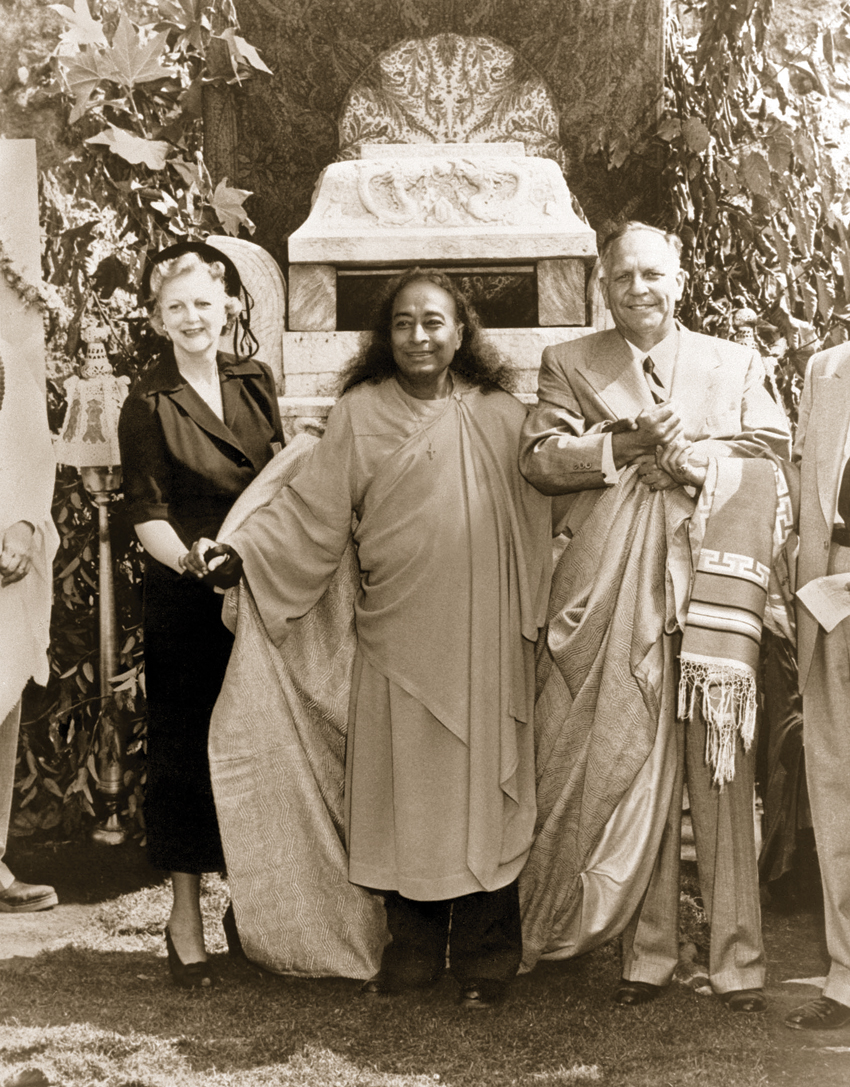
Today, Self-Realization Fellowship, under the direction of its president, Brother Chidananda, publishes the writings, lectures, and informal talks of Paramahansa Yogananda, and of his close disciples, produces audio and video recordings on Sri Yogananda’s teachings, oversees its temples, meditation centers, retreats, and youth programs, conducts annual lecture and class series in cities throughout the U.S. and abroad, and coordinates the Worldwide Prayer Circle, a network of groups and individuals dedicated to praying for those in need of physical, mental, or spiritual aid, and for global peace and harmony.
Paramahansa Yogananda passed away on March 7, 1952, in Los Angeles, following his delivery of a speech at a banquet honoring Dr. Binay R. Sen, India’s Ambassador to the United States. His passing received widespread coverage in the press, including in the New York Times, the Los Angeles Times, and Time magazine.
In 1977, on the occasion of the twenty-fifth anniversary of Paramahansa Yogananda’s passing, the Government of India formally recognized his outstanding contributions to the spiritual upliftment of humanity, by issuing a commemorative stamp in his honor.
In March of 2017, a second commemorative stamp was issued by the Indian Government, citing the outstanding spiritual achievements of Yogoda Satsanga Society on its centenary. India Prime Minister Narendra Modi stated during the official postal stamp release function on March 7, 2017 at the Vigyan Bhavan in New Delhi: “Looking at [Paramahansa Yogananda’s] life, it is evident that he does not merely stress the ways to outer freedom, but focuses on the inner journey….Removing rigid dogma, he made spirituality so approachable and tangible that in these hundred years since he started it, his work has become a world-wide movement, a perennial resource of spiritual understanding.”
Dedicated throughout his life to bridging East and West and fostering peace through cultivating one’s connection with Spirit, Sri Yogananda said in his Autobiography of a Yogi, “‘World brotherhood’ is a large term, but man must enlarge his sympathies, considering himself in the light of a world citizen. He who truly understands that ‘it is my America, my India, my Philippines, my Europe, my Africa’ and so on, will never lack scope for a useful and happy life.”
For more information about Paramahansa Yogananda and Self-Realization Fellowship, visit www.yogananda-srf.org.
